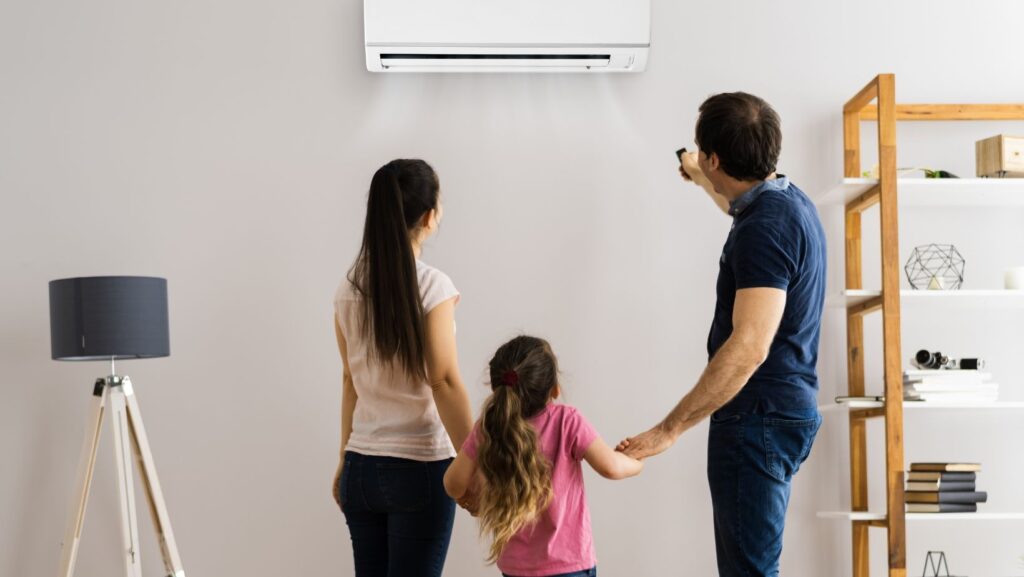The air circulating through our homes plays a crucial role in our daily health and comfort. Indoor air quality (IAQ) measures how clean and safe the air is within our living spaces, and the results might surprise you—indoor air can contain two to five times more pollutants than the air outside. Everything from household dust and pet dander to chemical vapors from cleaning supplies, mold spores, and smoke contributes to indoor pollution. If you or your family members deal with allergies, asthma, or other respiratory issues, keeping your indoor air clean becomes absolutely essential. Fortunately, you don’t need expensive equipment or major renovations to make meaningful improvements to your home’s air quality.
Understanding Indoor Air Quality
Indoor air quality reflects the chemical, physical, and biological makeup of the air inside our buildings. When air quality suffers, it doesn’t just affect our physical health—it can also impact our comfort levels and even our ability to think clearly and stay productive. Common culprits lurking in indoor air include dust mites, pet dander, mold spores, chemical vapors from paints and furniture, tobacco smoke, and harmful gases from appliances that burn fuel.
Poor indoor air quality often triggers immediate reactions like headaches, fatigue, and irritated eyes, but the long-term consequences can be more serious, including chronic respiratory problems, worsening allergies, and severe asthma attacks. Once you understand what’s polluting your air, you can take smart, targeted steps to clean up your home environment.
Key Strategies to Improve Indoor Air Quality
Source Control: Stopping Pollutants Before They Start
Source control stands as your first and most powerful line of defense against indoor air pollution. Rather than trying to clean the air after it’s contaminated, this approach focuses on preventing pollutants from entering your home’s air in the first place.
Start with the obvious changes: ban smoking indoors completely, choose paints and furniture labeled as low-VOC, and swap harsh chemical cleaners for gentler, natural alternatives. Keep gas appliances well-maintained to ensure they burn cleanly and don’t leak harmful gases. Take a critical look at potential pollution sources you might overlook—those scented candles you love, plug-in air fresheners, or that craft room without proper ventilation. Small adjustments in these areas can yield surprisingly big improvements in air quality.
Ventilation: Creating Healthy Air Flow
Effective ventilation works like your home’s respiratory system, bringing in fresh outdoor air while pushing out stale, polluted indoor air. This continuous exchange naturally dilutes concentrations of indoor pollutants and keeps air moving throughout your living space.
Make the most of natural ventilation by opening windows when outdoor conditions are favorable, running exhaust fans during cooking and bathing, and ensuring your heating and cooling system circulates air efficiently. When opening windows isn’t practical—during extreme temperatures or high outdoor pollution days—mechanical ventilation systems can maintain steady air exchange. The trick lies in finding the sweet spot between bringing in enough fresh air and maintaining energy efficiency.
Air Cleaning Solutions: Your Home’s Filtration System
Air purifiers and quality HVAC filters act as your home’s security guards, capturing airborne particles, allergens, and certain gaseous pollutants before they can affect your family’s health.
The effectiveness of any air cleaning system depends heavily on proper maintenance. Replace your HVAC filters based on the manufacturer’s schedule—usually every one to three months, though homes with pets or smokers may need more frequent changes. Different technologies tackle different problems: HEPA filters excel at trapping tiny particles, while activated carbon filters absorb odors and chemical vapors.
Humidity Control: Finding the Goldilocks Zone
Keeping humidity levels just right—between 40% and 60%—creates an environment where mold struggles to grow, dust mites can’t thrive, and your family stays comfortable. Both bone-dry and overly humid air can spell trouble for indoor air quality and your health.

During dry winter months or in arid climates, a humidifier can restore comfortable moisture levels, helping prevent dry, irritated skin and respiratory passages. On the flip side, dehumidifiers become invaluable in naturally humid areas or moisture-prone spaces like basements. A simple hygrometer can help you monitor humidity levels and make adjustments to stay within that optimal range.
Regular Cleaning and Maintenance: Consistency Pays Off
Consistent cleaning routines form the backbone of good indoor air quality by preventing the accumulation of dust, allergens, and other airborne nasties that settle throughout your home.
Vacuum frequently with a HEPA-equipped machine, wash bedding weekly in hot water, and dust surfaces using microfiber cloths that actually capture particles instead of just moving them around. Don’t forget the spots that often get overlooked—air vents, ceiling fan blades, and upholstered furniture all collect dust and allergens. Choosing natural cleaning products helps you avoid adding chemical pollutants to your air while keeping your home spotless.
The Role of Indoor Plants: Nature’s Little Helpers
Strategic placement of houseplants can provide a modest boost to your air purification efforts, as certain species naturally absorb toxins while releasing fresh oxygen. Plants like peace lilies, spider plants, and snake plants have shown real promise in laboratory studies for removing common indoor pollutants.
While plants make wonderful additions to your air quality strategy, they work best as supporting players rather than stars of the show. You’d need quite a few plants to make a dramatic difference, and they require proper care to remain healthy and effective.
Practical Tips for Everyday Air Quality Improvement
Put these simple strategies into action right away:
● Crack open windows whenever outdoor air quality is good
● Run exhaust fans every time you cook or shower
● Maintain a strict no-smoking policy indoors
● Check humidity levels regularly with an inexpensive gauge
● Mark your calendar for regular air filter replacements
● Look for low-VOC labels when buying paints, furniture, or building materials
Creating Your Healthier Home
Transforming your indoor air quality isn’t about implementing one perfect solution—it’s about combining multiple strategies that work together to create cleaner, healthier air. Source control, smart ventilation, effective air cleaning, proper humidity management, and regular maintenance each play important roles in this process. Start by evaluating your current situation, then gradually implement these proven techniques. With consistent effort, you’ll create an indoor environment that supports your family’s health and well-being for years to come.
